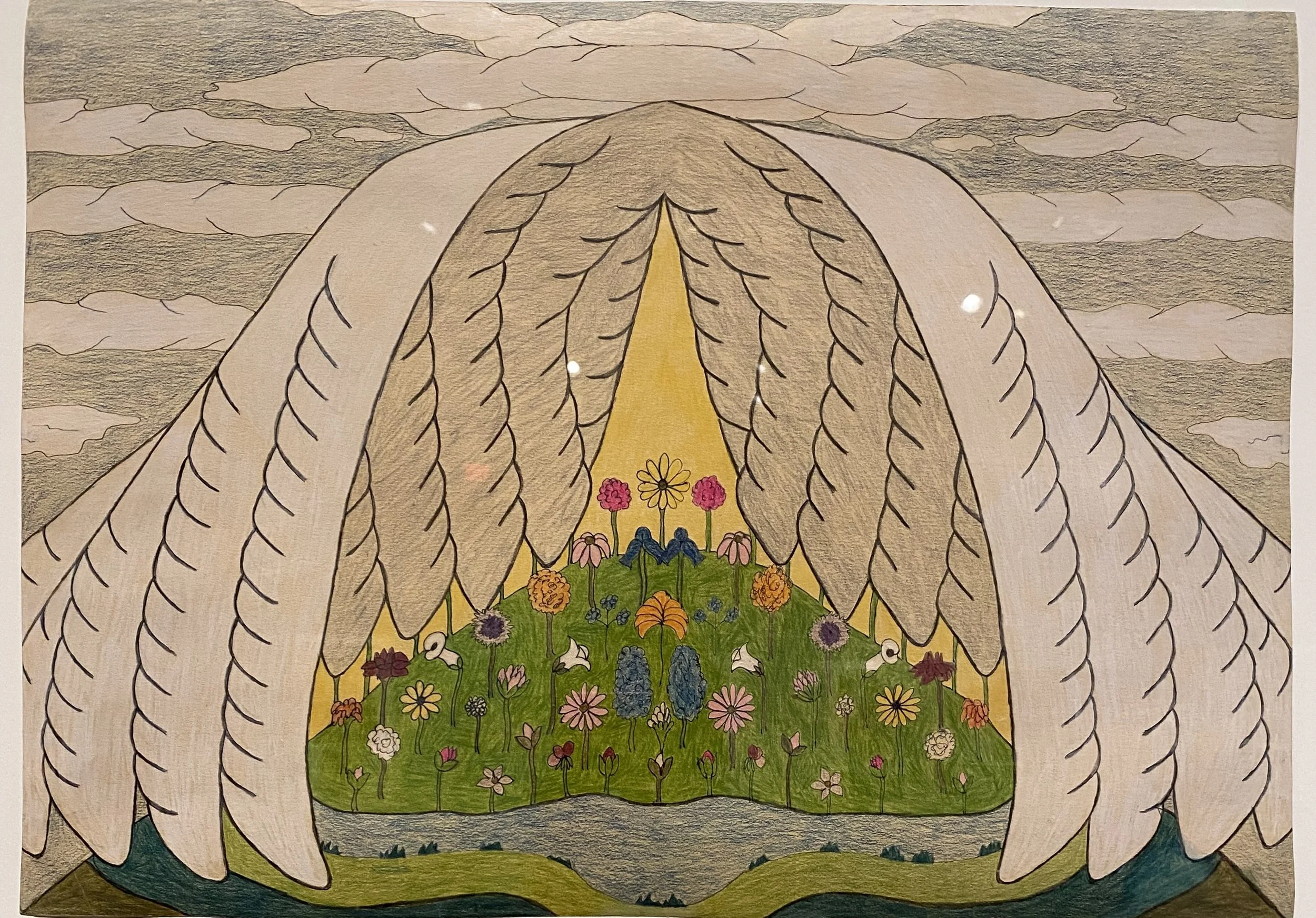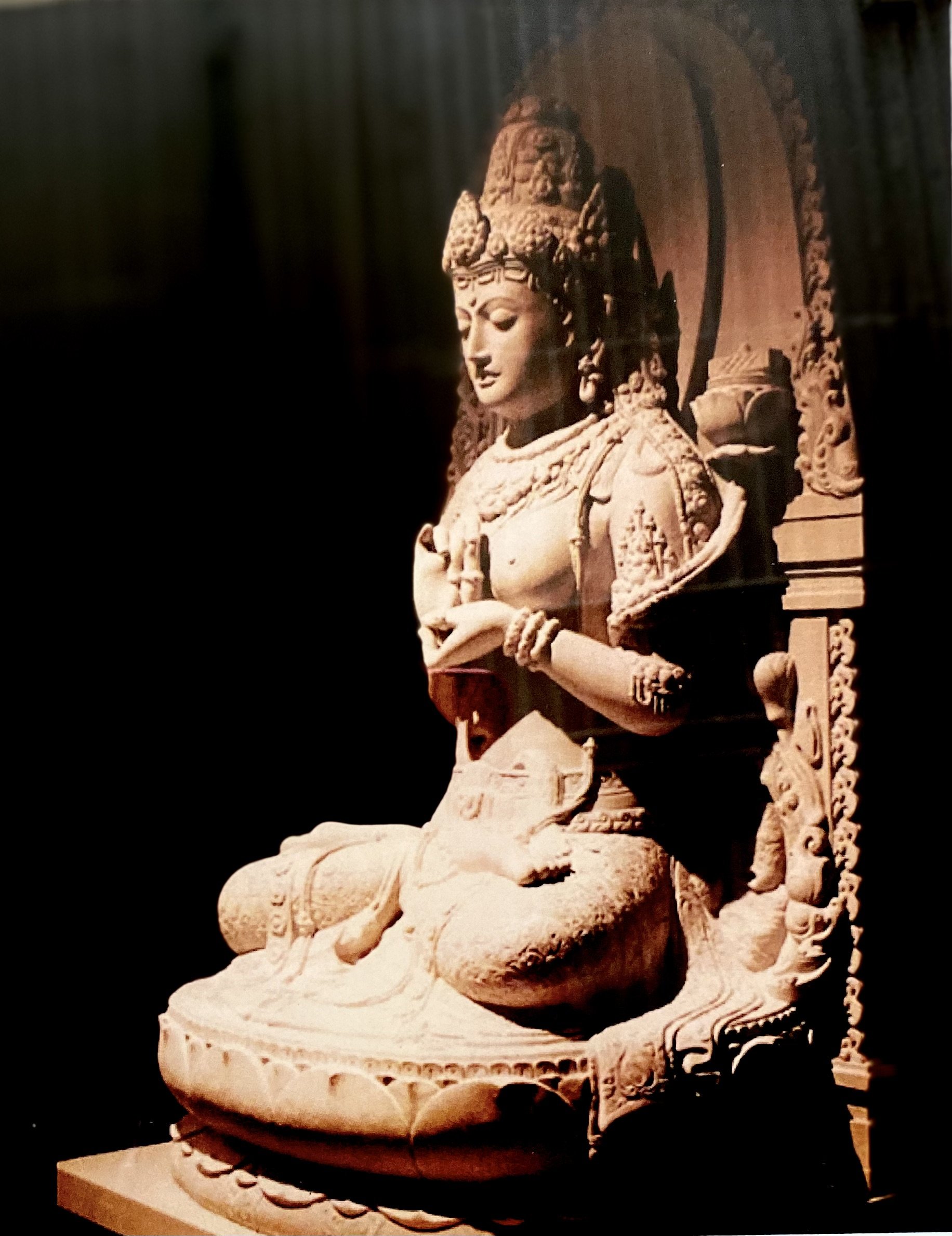By: Bob Zeglovitch
This past Friday, we continued our exploration of what it means to take refuge. We began with Mingyur Rinpoche’s observation that everyone takes refuge in something, and that this “refuge” may consist of habitual emotional responses or thought patterns. (See the most recent blog post, dated August 4, 2025 for more detail). Mingyur Rinpoche gives as one example anger and a sense of self-righteousness. Such clusters of emotions and thoughts can be deeply ingrained, such that we return to them repeatedly, out of a deep familiarity and/or conditioning. Is there an odd and yet somewhat perverse comfort in returning to such states even when we know that they are not helpful? Or might they be a sort of vestigial part of our psyche, some aspect of which was adaptive and protective for us earlier in life? Because of our repeated return to these states, we suffer from the fundamental delusion that they are identical with our “self”—that they represent who “I am.” In fact, they are impermanent phenomena. Our development and life circumstances may change such that these states occur less frequently (or not at all), or with less intensity, or can be seen as not “I” but instead just like a bit of weather passing through the sky. We can also develop a new relationship with them that allows for greater balance and freedom.
One way of thinking about these clusters of emotion and thought is that they are like autonomous subpersonalities, or “parts.” This is the view taken by the Internal Family Systems (IFS) psychotherapeutic model, developed by Richard Schwartz. These parts may spring from our unconscious and take us over. One aspect of the work in this system is to recognize and befriend these parts, not shunning them but inviting them to relax.
The particular instruction for the beginning of our meditation session was drawn from a talk and guided meditation given by Loch Kelly, a meditation teacher trained in the Tibetan tradition who is also deeply versed in IFS. Everyone was asked to become curious about four possible “parts” that they might recognize as part of their inner landscape. There was no need to believe the IFS model’s assumption that we all have separate sub-personalities. Instead, participants were asked to play with this possibility, perhaps recognizing these parts as inner voices that we may hear, or even just imagining that there might be parts of them that fit the descriptions. The instruction was as follows regarding these four parts: (1) See if you can notice that part of you that wants to “get it” and “accomplish it”—the good intentioned doer part of you. Thank that part for its hard work and let it know that it can relax, that it will benefit from the meditation but is not needed now; (2) Perhaps there is that part of you that is doubting or dejected, a part that is based in some shame. This is the inner voice that may say: “I’ll never get it, but other people may—or “I’m not good enough or deficient in some way.” Thank this part and let it know that it doesn’t have to “get it.” Invite this part to relax and not to worry—let it know that it can rest and does not need to be involved. (3) See if you can notice that part of you that is the ego-manager, the smart and thinking part. This may be the part of you that thinks it knows something about the dharma and its benefits and the way it works, and feels it must keep checking with thought to know and confirm. Let this part know that it can rest and be a beginner. (4) Perhaps there is a part that may be afraid of letting go, that does not want to be out of control and is worried about entering a void or becoming nobody. You can thank this part of it concern for safety and let it know that you are not being abandoned or going out of control, but exploring a beneficial quality of the mind and that you will be back. Ask this part for a few minutes of space to explore.
The beauty of this instruction at the outset of a meditation session is that it invites mental relaxation in precisely those areas where we might unconsciously be taken over by the energy of one or more of these parts of ourselves. You may sit down and be lost almost immediately. Of course, you might commence your meditation session, relax these various parts, only to have one or more of them surface vigorously mid-session. If that happens, see if you can recognize that this is just a part of yourself and follow the basic instructions of thanking this part and inviting it to relax. Relaxation is an often-overlooked quality to invite in meditation. For more on this subject, click on the “tag” Relaxation at the end of this post, which will take you to related posts. See also the February 11, 2025 entry on the Readings page of this website, for comments by Chan Master Sheng Yen on the importance of relaxation in the practice of Silent Illumination.
After our sitting and walking, we engaged in a structured reflection drawn from Schwartz’s book Introduction to Internal Family Systems. Participants were asked to take a few moments to think about the relationships that they have formed with their different thoughts, emotions, or inner voices. They were then given a list of parts or voices that most people experience and are sometimes concerned about. Participants were asked to reflect, as they heard each item on the list, on how they relate to it—how they feel toward it, what they do or say when they experience it, whether they have exiled it from their life, and how much their relationship with it affects their life. The list of items, abbreviated from Schwartz’s longer list, was as follows:
The inner voice that criticizes your appearance or performance
Anxiety that freezes your mind in high performance situations
The urge to eat or drink too much
Jealous or possessive feelings about your partner
Yearning for intimacy
Worries that flash worst case scenarios in your mind
A nagging sense of worthlessness
The voice that tells you that you are not working hard enough and won’t let you relax
The urge to take care for everyone and neglect yourself
The anger that surges forth when you feel hurt by someone
Loneliness that comes up when you are not distracted or with people
The need to be in control of everything or everyone
The happy or “together” mask that you hide behind
The perfectionist inside you that can’t allow any mistakes or blemishes
Dissatisfaction with your place in life or your achievements
In our discussion immediately following this reflection, we were naturally led back to the topic of taking refuge. One of our sangha members commented that it felt like refuge when he “stepped back” from these voices. His use of the phrase “step back” was uncanny for two reasons. First, it is the precise language that Schwartz uses in relation to IFS work. He comments that “the more you notice—step back from—rather than become or identify with your thoughts and emotions, the more you relax into being the “you” who is not your thoughts and emotions.” Second, we find the notion of “stepping backward” in core Zen and Chan texts. In his Fukanzazengi (Universal Recommendation for Zazen), Dogen tells us we should “learn the backward step that turns your light inwardly to illuminate your self.” The Chinese Chan Master Hongzhi, who is credited with originating the practice of Silent Illumination that is closely related to Zen “just sitting”, instructed: “Just take a backward step and open your grasping hands.” Who is present when we step back from those clusters of thoughts and emotions that we take to be “my” “self”, or parts of “my” “self”? What qualities manifest here? Is there a sense of protection here? This points us, I think, in the direction of the refuge of Buddha, our original nature that is always “just there” and yet generally blocked from view.
How does this model of multiplicity of “selves” relate to the Buddhist understanding of “not self”? This is an interesting question that exceeds the scope of this post, but which we will perhaps take on down the road. One thing does seem relatively clear: playing with recognizing and relaxing various inner “parts” or “voices” can only serve to loosen our identification with hardened emotional and thought patterns, and our attachment to this monolithic “I” that causes suffering.






